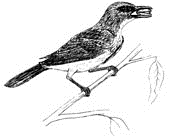Vertebrate Pest Conference: Proceedings

Vertebrate Pest Conference Proceedings: 17th (1996)
Date of this Version
1996
Document Type
Article
Citation
Published in Proceedings: Seventeenth Vertebrate Pest Conference … 1996, ed. Robert M. Timm & A. Charles Crabb (University of California, Davis, 1996).
Abstract
Beginning in October 1988, Texas experienced the onset of an expanding epizootic of canine rabies in South Texas. That epizootic now involves 21 counties, with 678 laboratory confirmed cases as of February 1996. Approximately 50% of those cases have occurred in coyotes and most of the remainder in domestic dogs. Seventy-six "spill over" cases have been reported in seven other species, both wild and domestic. Since 1991, over 2,000 people in South Texas have received post exposure rabies treatment due to potential exposure to a rabid animal and two human deaths have been attributed to this virus strain. The Texas Department of Health (TDH) is the lead agency in the development of an experimental program designed to explore use of an oral rabies vaccine, Raboral V-RG, produced by Rhone-Merieux, Inc. in Athens, Georgia. The Oral Rabies Vaccination Program (ORVP) is an innovative cooperative project involving the TDH; Texas Animal Damage Control; U.S. Department of Agriculture (USDA); Texas A&M University-College Station; Texas A&M University- Kingsville; Centers for Disease Control and Prevention, Denver Wildlife Research Center; USDA Predator Research Center at Logan, Utah; Texas National Guard, U.S. Army; Canadian Ministry of Natural Resources; and Rhone-Merieux, Inc.
The objective of the first year of the program was to determine the feasibility of using Raboral V-RG oral rabies vaccine, delivered in a bait to coyotes, as a method of controlling the northward expansion of the South Texas rabies epizootic. Field application of the vaccine was with vaccine/bait combinations containing 2 milliliters of Raboral V-RG vaccine at a minimum field dosage of 107.4 virus particles in a plastic container (a sachet) enclosed in a hollow extruded bait. The long term program strategy is to be conducted over the next four to five years, and has the goal of pushing the epizootic southward and eliminating it from Texas.
Included in
Animal Sciences Commons, Bioresource and Agricultural Engineering Commons, Environmental Engineering Commons


Comments
Copyright © 1996 (where applicable) by the Vertebrate Pest Council of the Vertebrate Pest Conference. Used by permission.